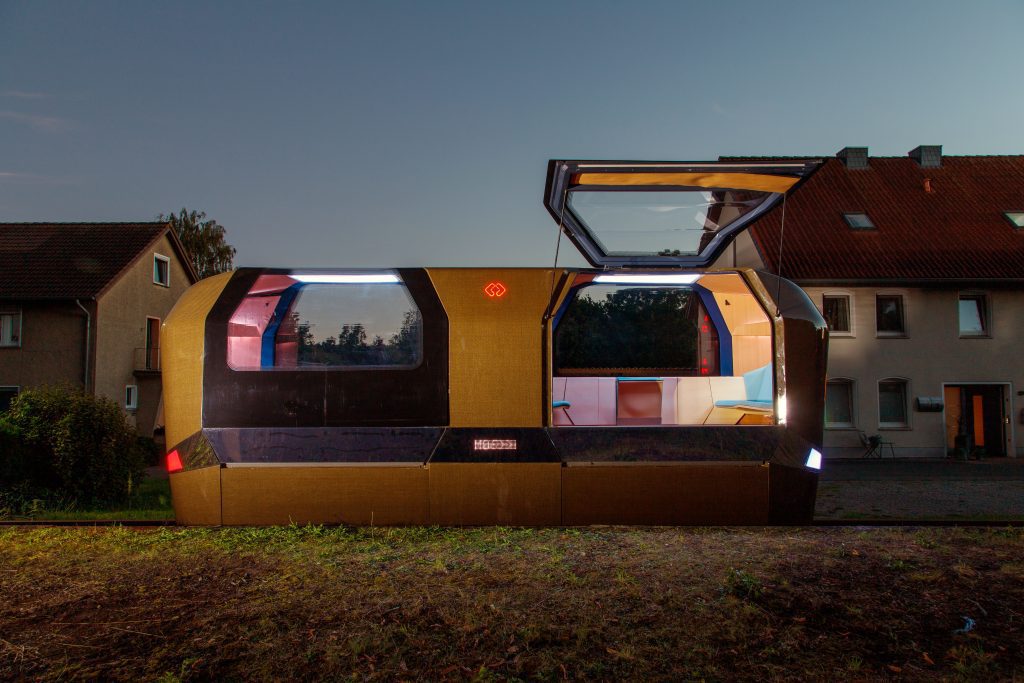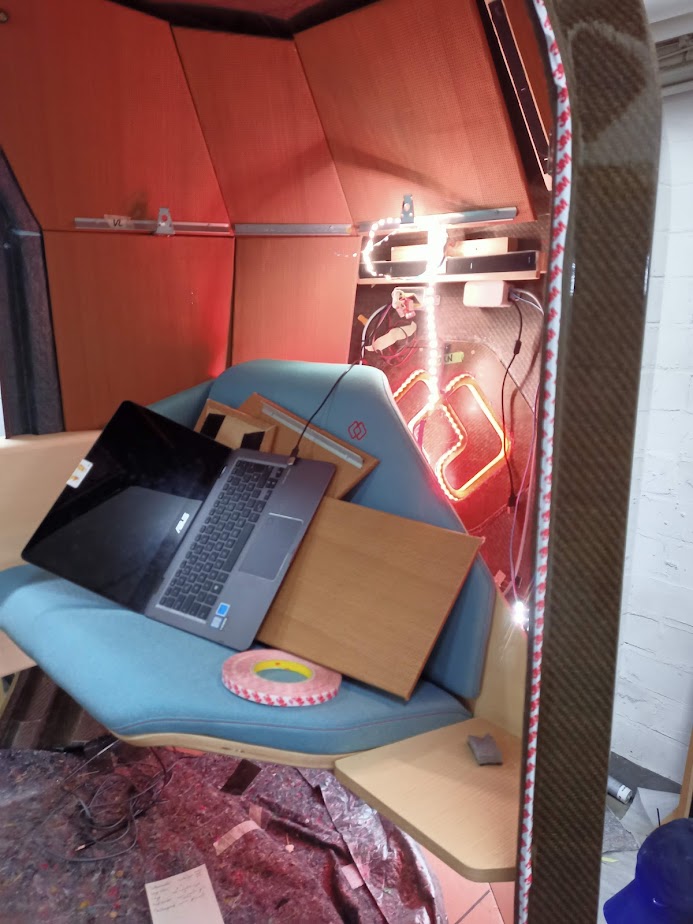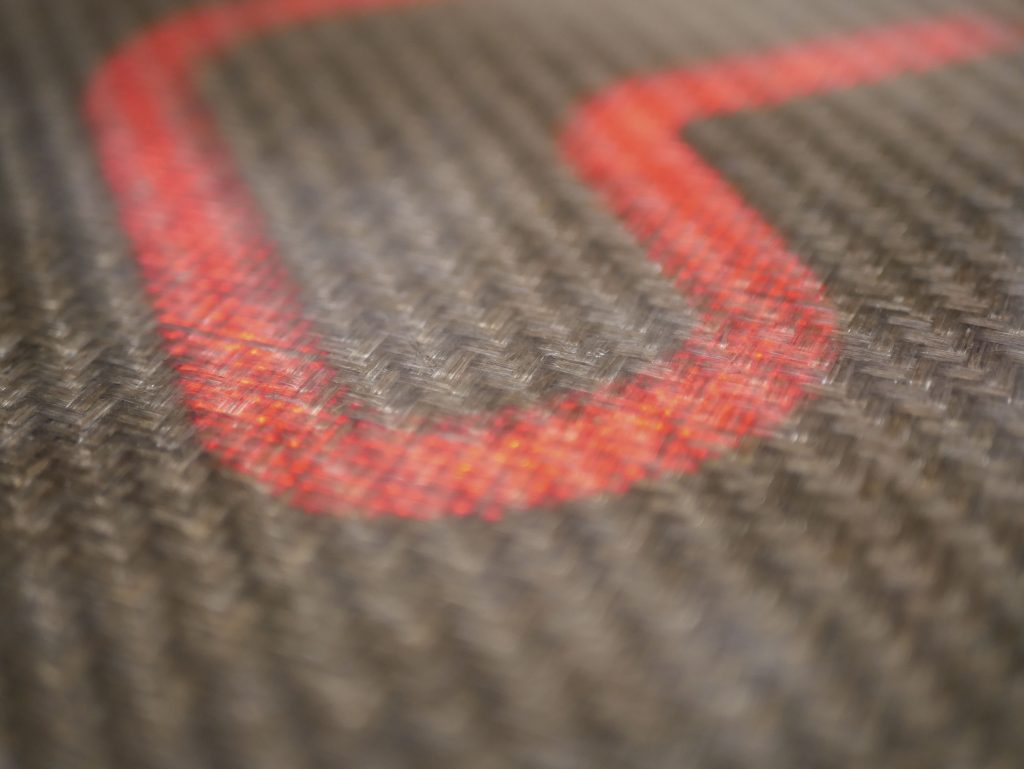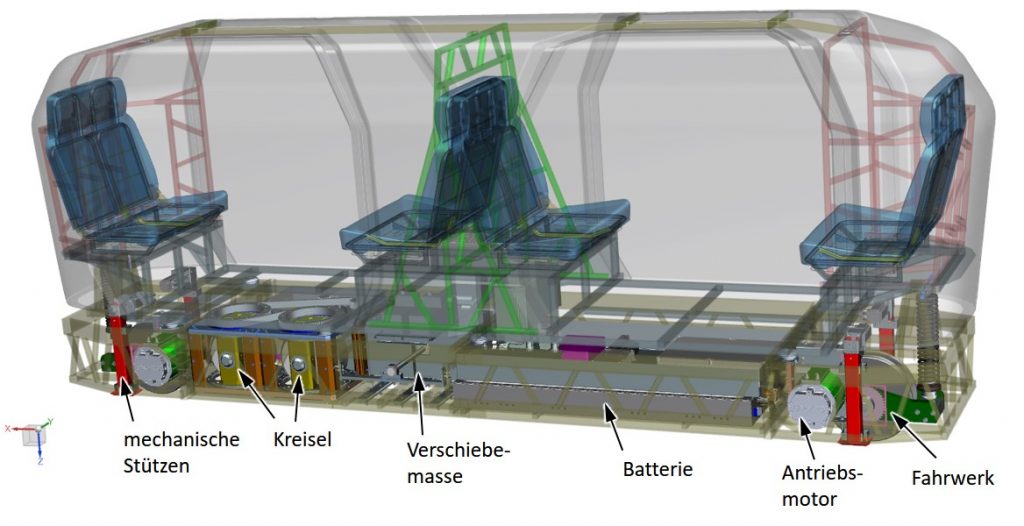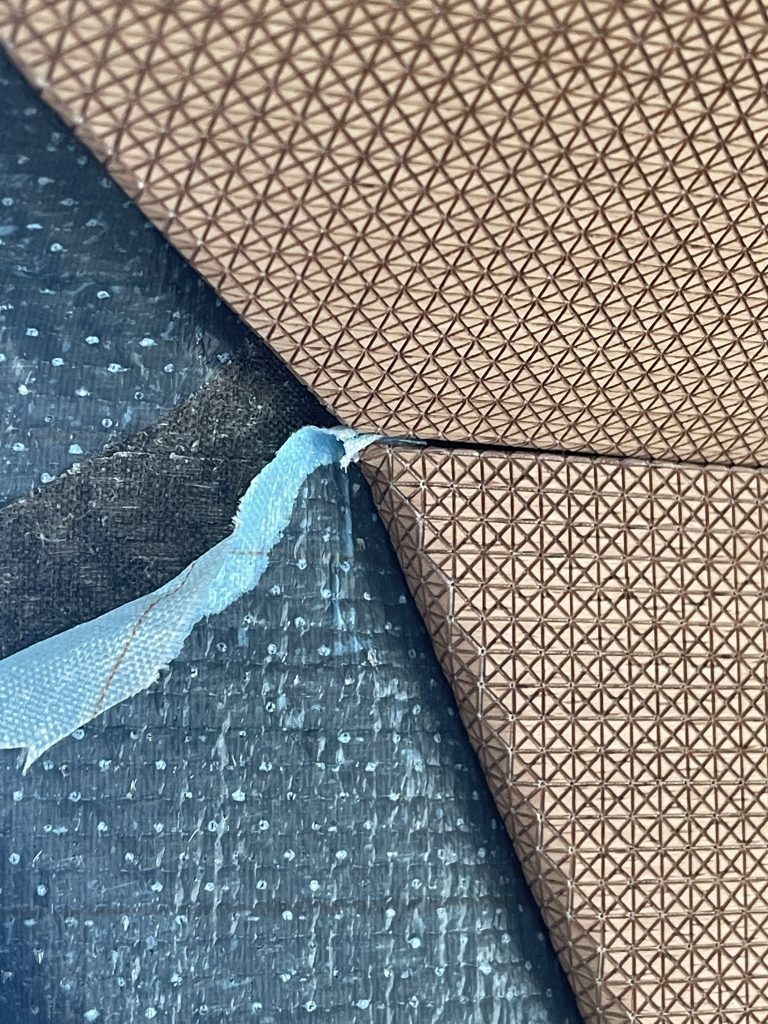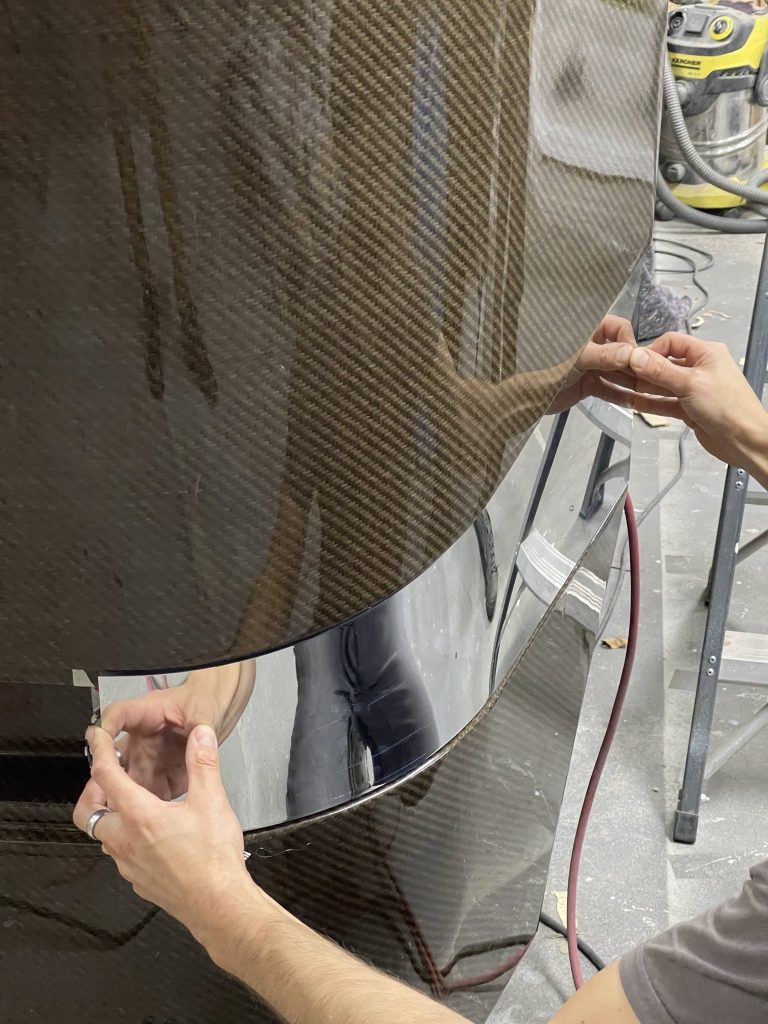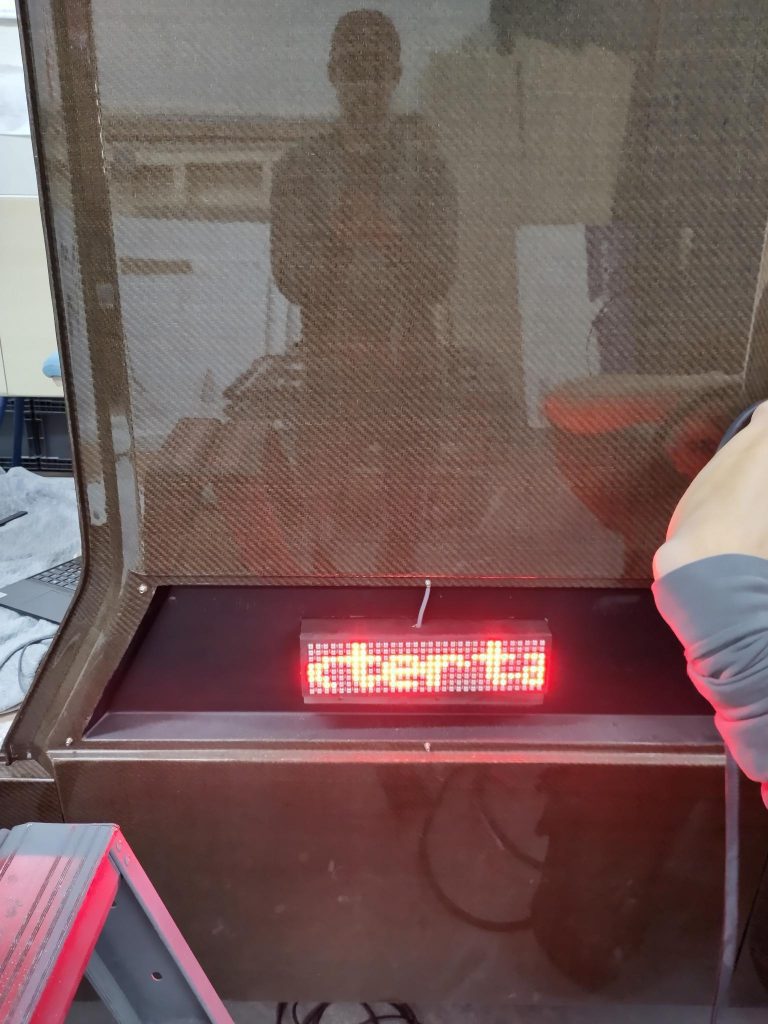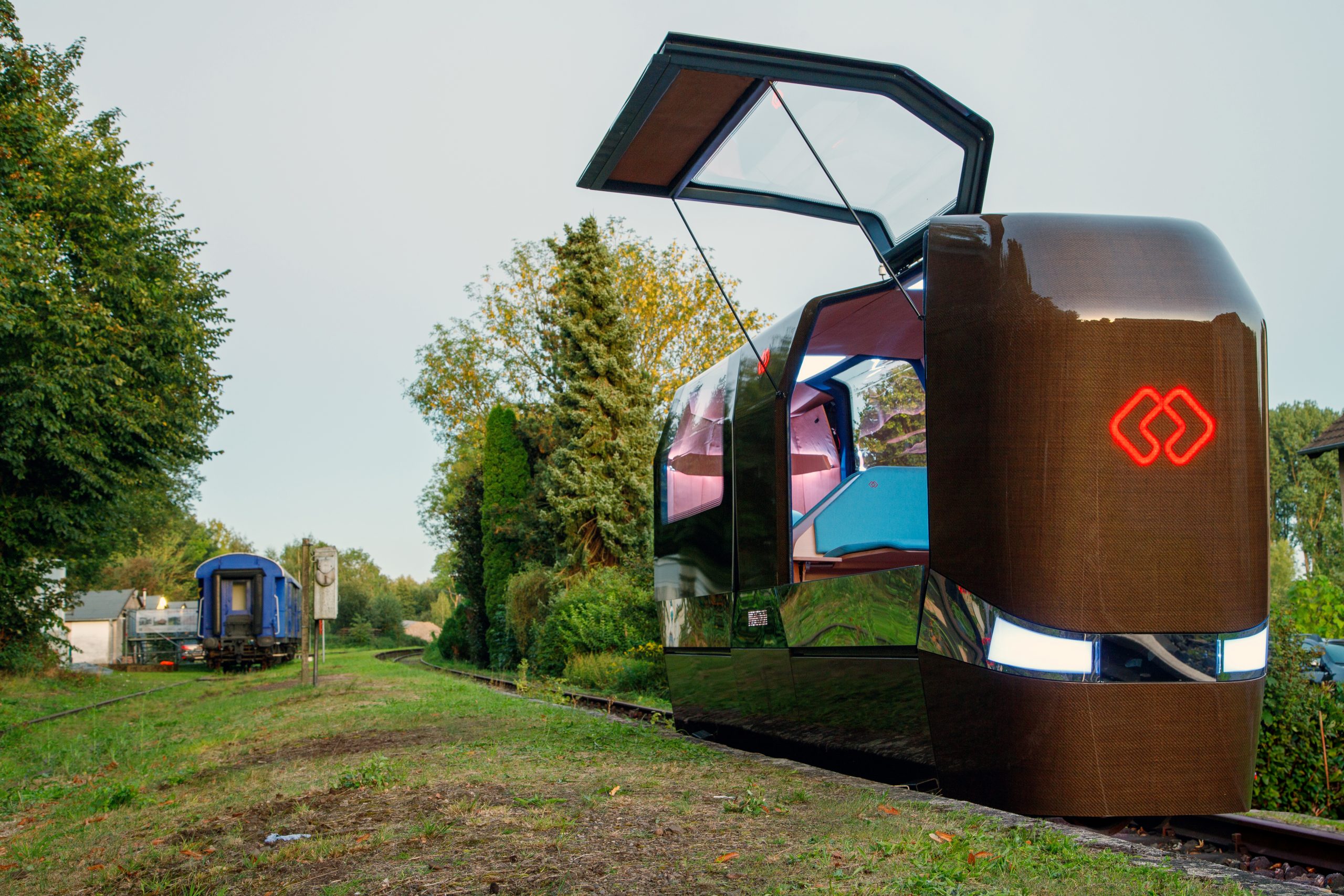
MonoCab OWL I – Cabin Design


MONOCAB OWL is funded as part of the implementation of the Operational Programme of the European Regional Development Fund (ERDF) in North Rhine-Westphalia for the period 2014-2020 with co-financing from the Ministry of the Environment, Nature Conservation and Transport of the State of North Rhine-Westphalia. Behind the project team is a cooperation of the TH OWL as leading institution, the FH Bielefeld, and the Fraunhofer IOSB-INA. The original idea derives from a concept developed by the Landeseisenbahn Lippe e.V. This article is focusing on the Cabin Design including exterior, interior design as well as User Experience and User Interaction. The Design Team is led by Prof. Ulrich Nether, Prof. Hans Sachs. The core project team consisted of two part time Research assistants, Carolina Meirelles R. S. Menezes, Maximilian Müh and a team of student assistants: Marie Brackmann, Mohammed Khaled, Mohamed Mahmoud, Benedict Neise, Yassmeen Sakr, Linus Gavanea, Christian Siebje.
The MONOCAB I project consists of 3 realized demonstrators to prove the concept. Therefore one Design Demonstrator as “Show Mock-Up” and two functional and on real train tracks operating Tech Demonstrators have been realized in two years. The project has been presented to partners, politicians (regional & state) and public in October 2023 in OWL.
Comprehensive Design Concept
MonoCab OWL is a futuristic mobility concept integrating new and sustainable materials and composites with digital fabrication technologies. With a comprehensive user interaction and experience, the MonoCab represents a new way of public transportation, which is more adaptable to personal needs, simpler, more individualized, intuitive and, above all, more accessible to everyone.
Manifold qualities
The concept of the MonoCab appears in manifold ways: simple and complex, futuristic and sophisticated, dynamic and elegant. The vehicle is a self-propelled, gyroscope-stabilized and autonomous driving monorail vehicle powered by electric motors. The cabins travel in both directions on one rail (one rail for each direction), like a paternoster. The first demonstrators will be tested in 2022.
Sustainable Design
The MonoCab team sets a strong focus on alternative materials and production methods. The cabin of the vehicle is made of natural fiber composites (NFC). In addition to cork, which is used in the outer shell as a stabilizer and damper, sustainable materials such as wood, recycled plastics, cellulose and natural textiles represent smart, modern and warm interior furnishings.
Shy but intuitive: UI and UX
The interior as well as the communication of the MonoCab can be adapted to the individual needs of its passengers via a specific user interaction design. Thus, numerous configurations of a MonoCab are possible for accomodating wheelchairs, bicycles (also cargo bikes), luggage or even freight. The communication with the vehicle in terms of displays, lighting and audio, can be customized, too. Information is conveyed according to the Universal Design 2-senses principle and at the same time it follows the idea of Shy Technology.
Due to climate change, mobility will change drastically in the coming years. Hereby a key role lies not only in new driving technologies and their energy supply but also on a wholistic ecological design concept, sustainable production methods, in particular in innovative and flexible mobility concepts.
Sustainable Design
The dicussion about mobilty development is actually dominated by electric or hydrogen driven technologies and the improvement and extension of public transport services. Besides the energy supply and consumption while using a transportation vehicle, there is another – mostly underestimated – key part of making the sector more sustainable: design and fabrication of mobility infrastructure and vehicles. Only a few concept studies and start-up projects address this topic and integrate new concepts of assembly, that emphasize the principle “cradle to cradle” or the use of sustainable resources and energy in the fabrication or even development process.
Mobility in rural areas: “Without a car, you’re screwed”
In rural areas in particular, there is still a lack of public, easily accessible, individualized and sustainable mobility offers. East Westphalia-Lippe is a rural region in Germany, typical of so many sparsely populated areas in the country with a lot of space, wide spread economic activities, places of residence and many opportunities. There is hardly any public transport available. Several train lines have been deactivated and abandoned over the years. In Germany, there are countless single-track rail lines in rural areas that are no longer or only rarely used. Revitalizing these lines with new concepts and strategies could significantly advance regional development and change infrastructural opportunities. In order to not get left behind, rural regions must become more mobile, comfortably and rapidly connected – for more quality of life and more economy impetus.
related News post on this page: https://mid.ids-research.de/news-story/monocab-presentation-first-ride/
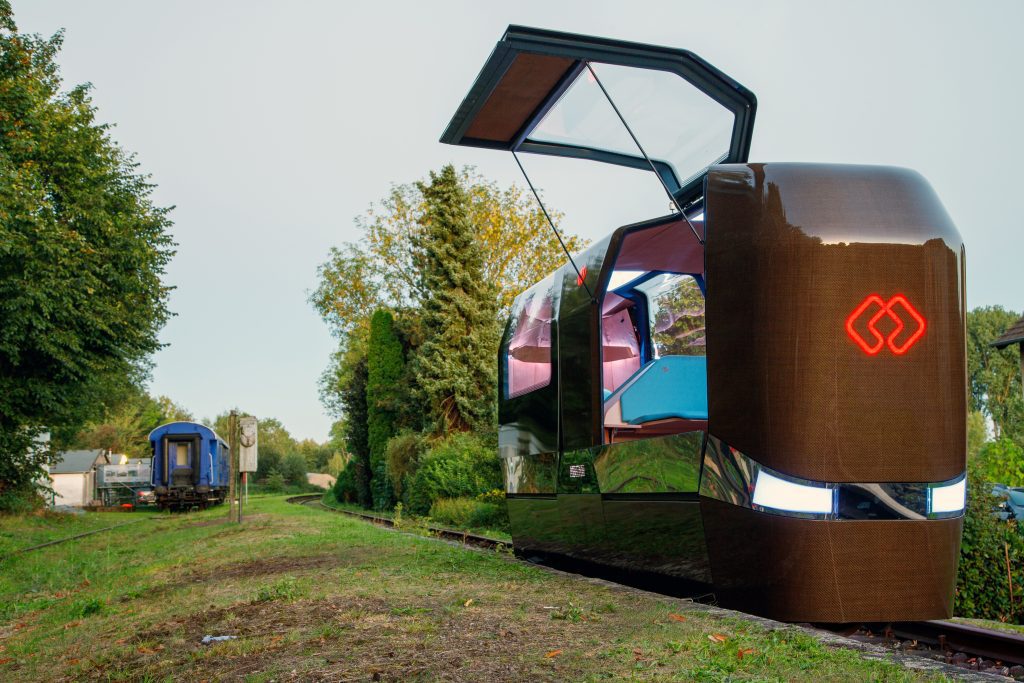
MonoCab OWL I – Cabin Design
- Team:
- Ulrich Nether
- Hashtag(s):
- #1:1 Realization Project
- #Mobility
- #Research










